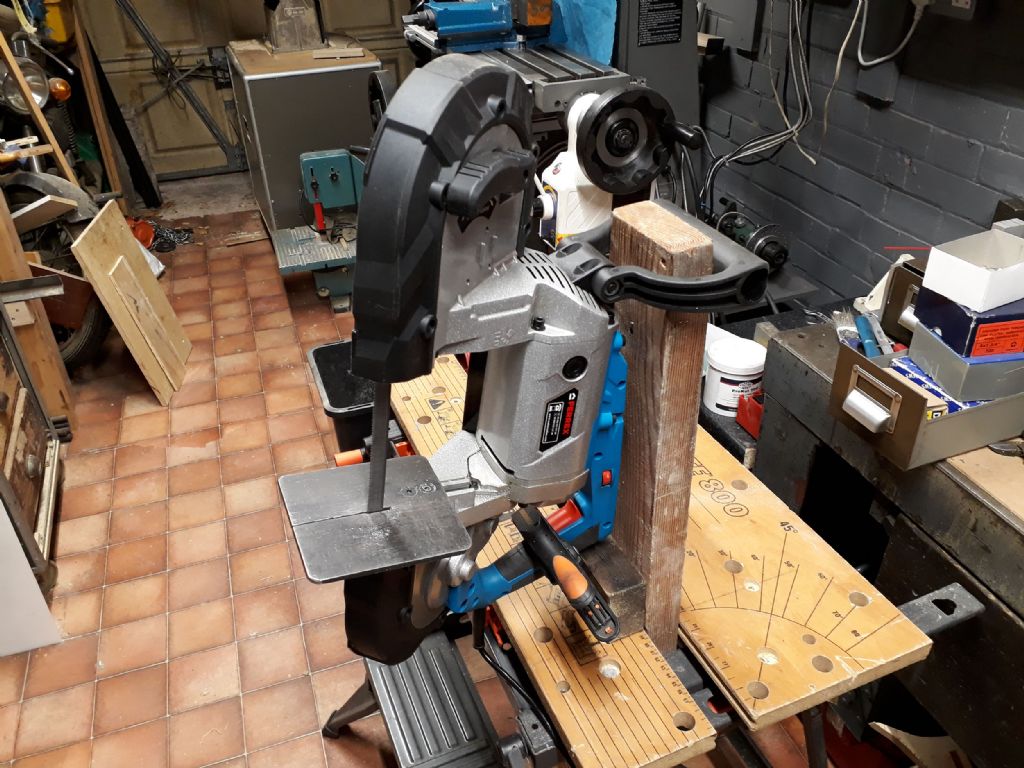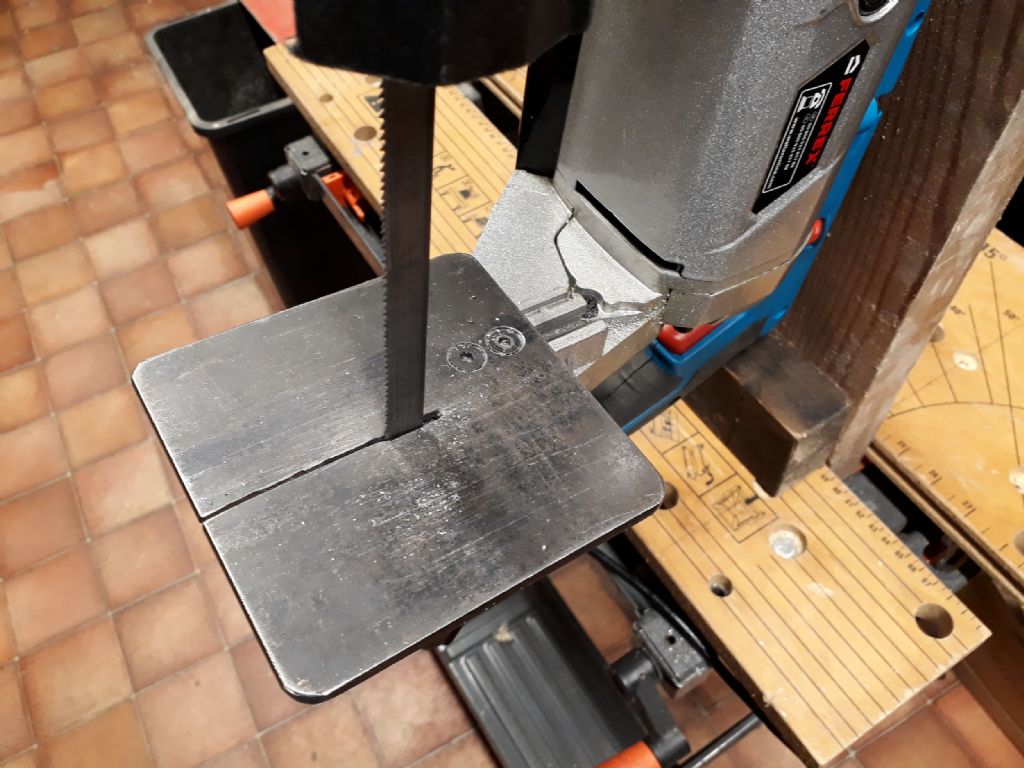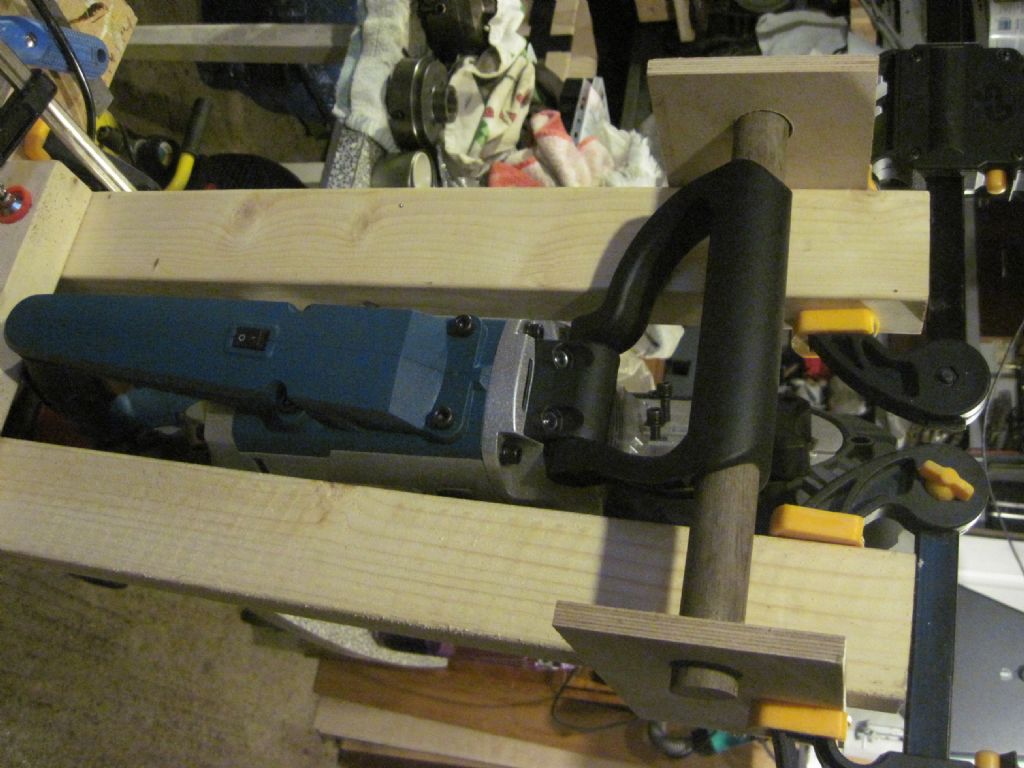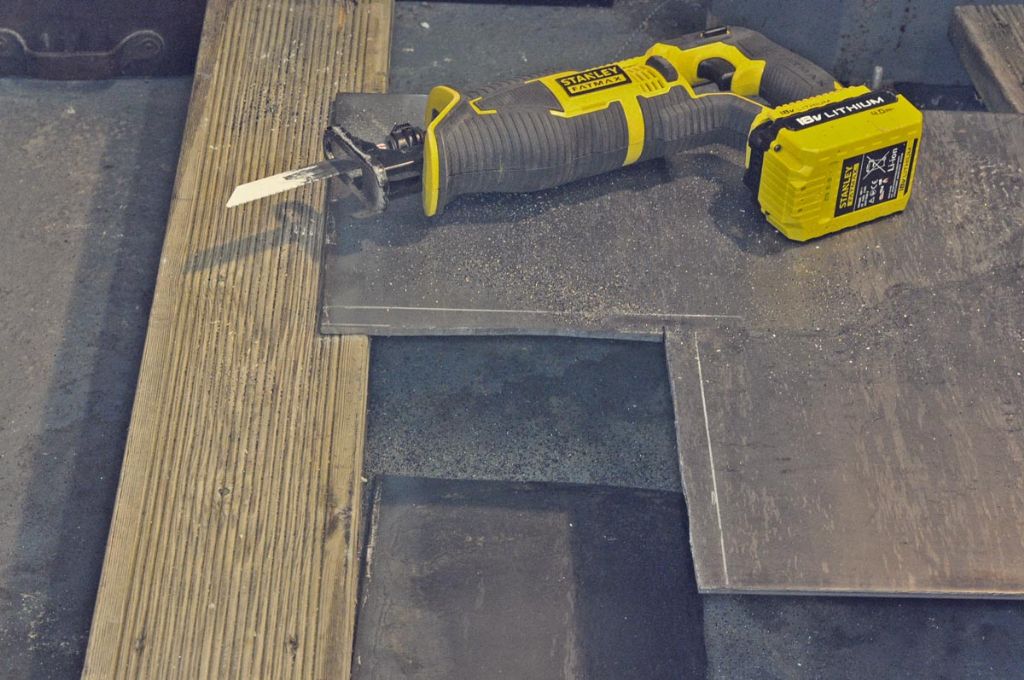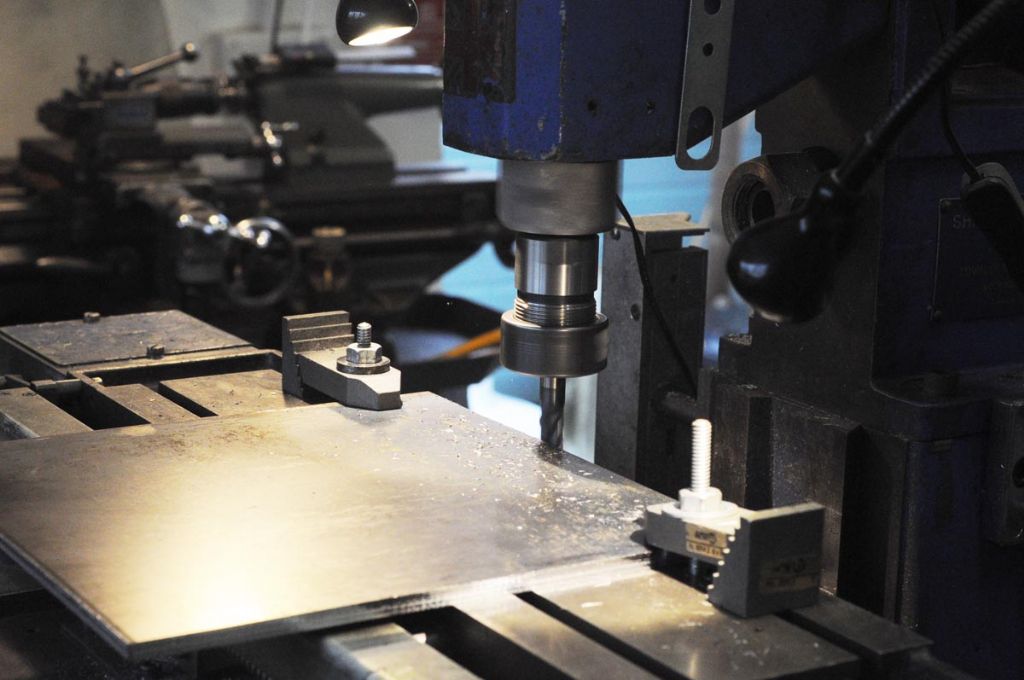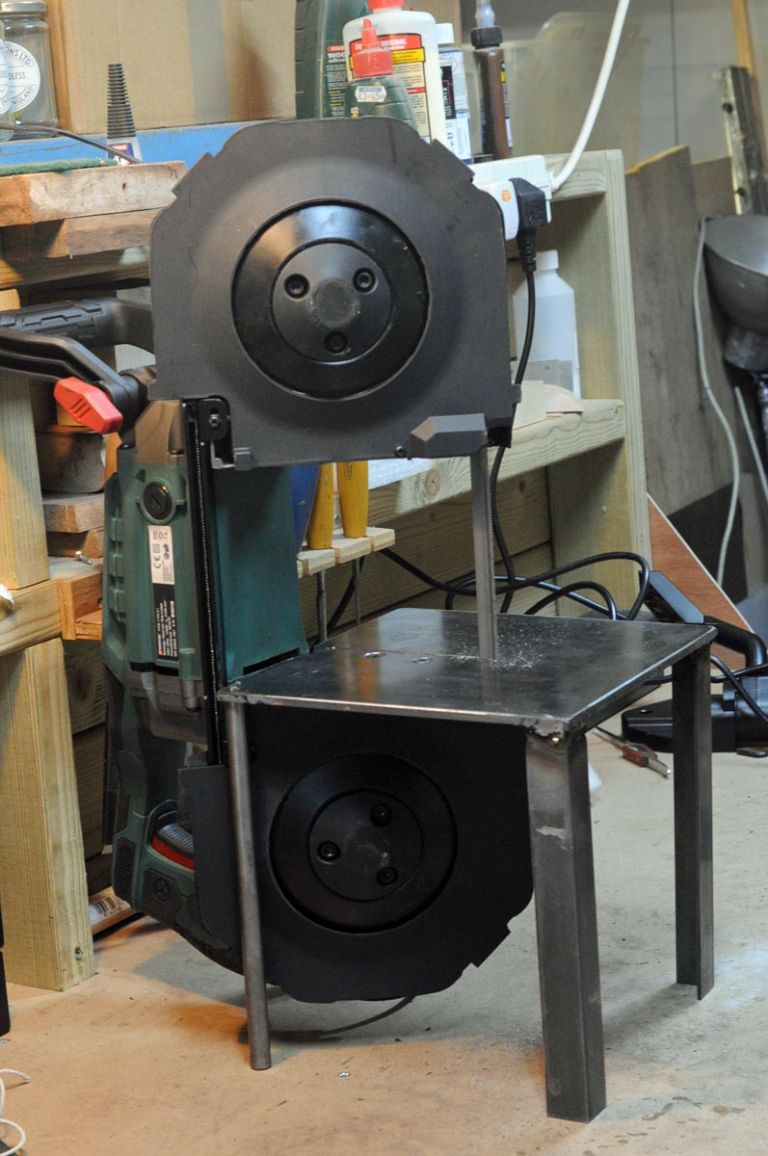Ian,
Make sure the bearing plates are set correctly on the swivel arm thrust bearings (mine were set to bear on the flat surfaces!!). Grease them up and tighten up the big silver dome nut so it will comfortably hold the saw assembly under friction when raised from the job.
DONT use oil, completely unnecessary, cut dry only or use some candle wax if you get a squeal , my original blade was a quality item, 10/14 I think, so good down to 2 or 3 mm. It just rips through thick stock with ease and hardly seems to get warm, Find a suitable small plastic tray (eg food packaging) to blue tack into place under the blade for collecting the copious stream of cuttings that is generated.
The work piece clamp can be considerably improved by making a keeper (a sort of shallow threaded T Nut ) to place under the body, secured to the moving jaw through the slot in the clamp base, with nut and bolt. This minimises the tendency of the moving jaw to lift when tightened. The hardest bit is to get unscrew the clamp shaft from the moving jaw. The 12m nut on the moving jaw is threadlocked, so I resorted to jamming a screwdriver in the nut end and levering a stilson on the handle end.
You may also find, that the clamp body casting is unevenly cast with bulges towards the fixed jaw end, certainly the case with mine, so I passed a file over the high spot until tolerably flat. Don't attempt to press any bulges out – you will crack the casting (go on ask me how I know!). To get a perfectly 90 degree cut in the vertical plane, you can shim out whichever pair of fore/aft clamp mount points to suit.
Does involve a bit of work to fine tune, but really worth it if you expect to use horizontally. Probably lots of other simple mods could be done to improve utility. Geometry is a bit awkward for detail cutting arrangements in the horizontal mode, more of a bar shredder in that mode. I expect good things for detail work when set up as a vertical saw, probably with a 14/18 blade.
 Ady1.
Ady1.

